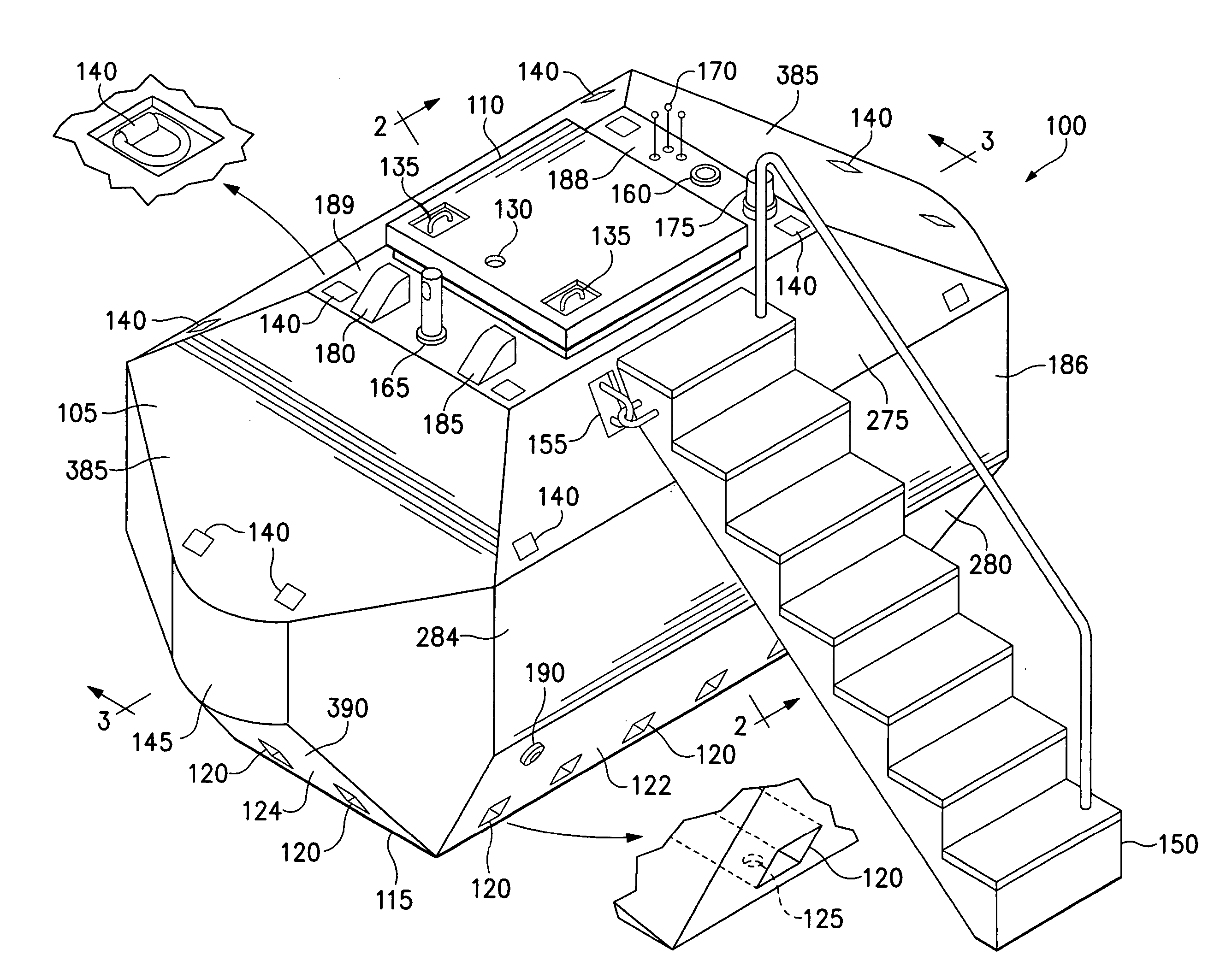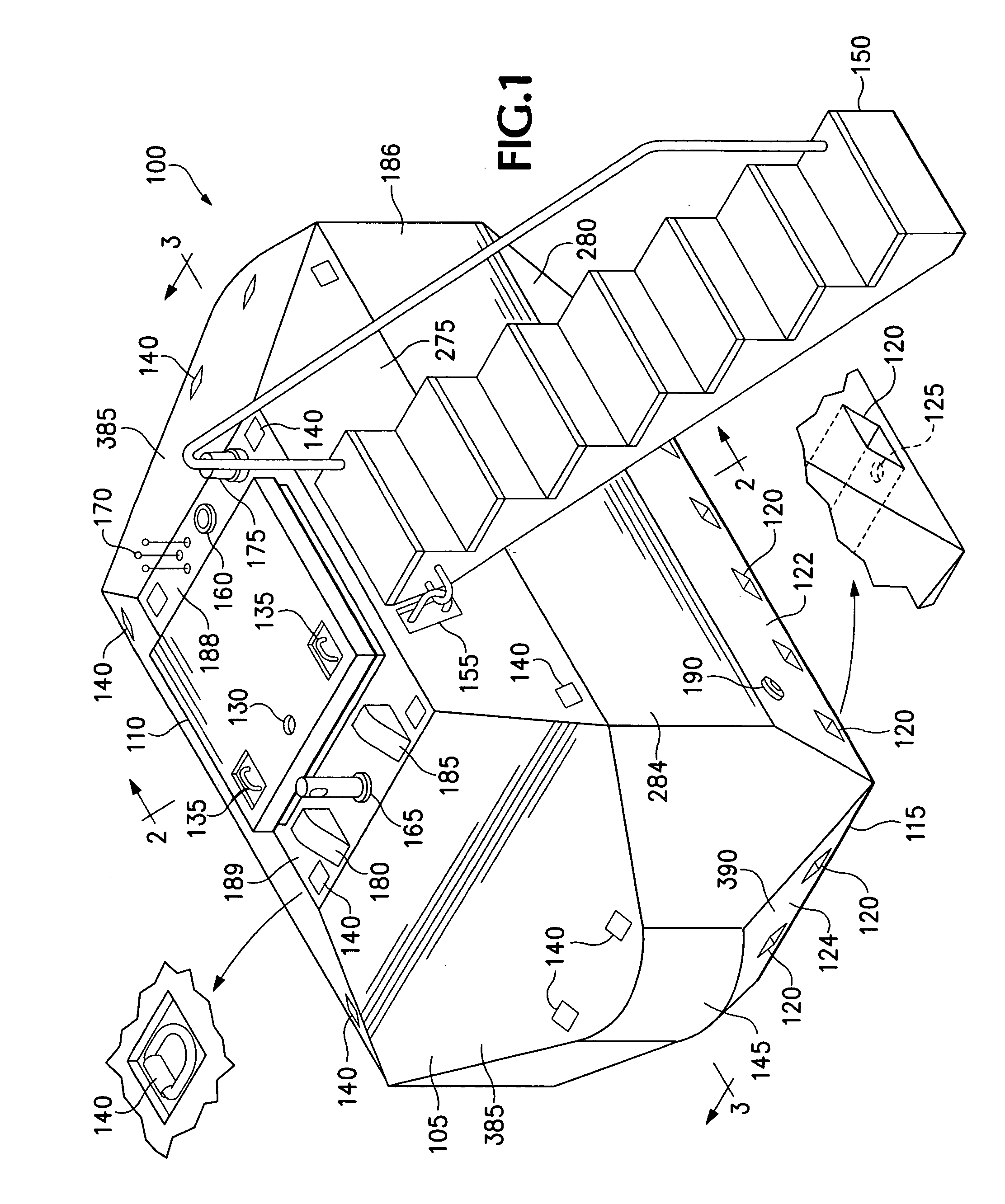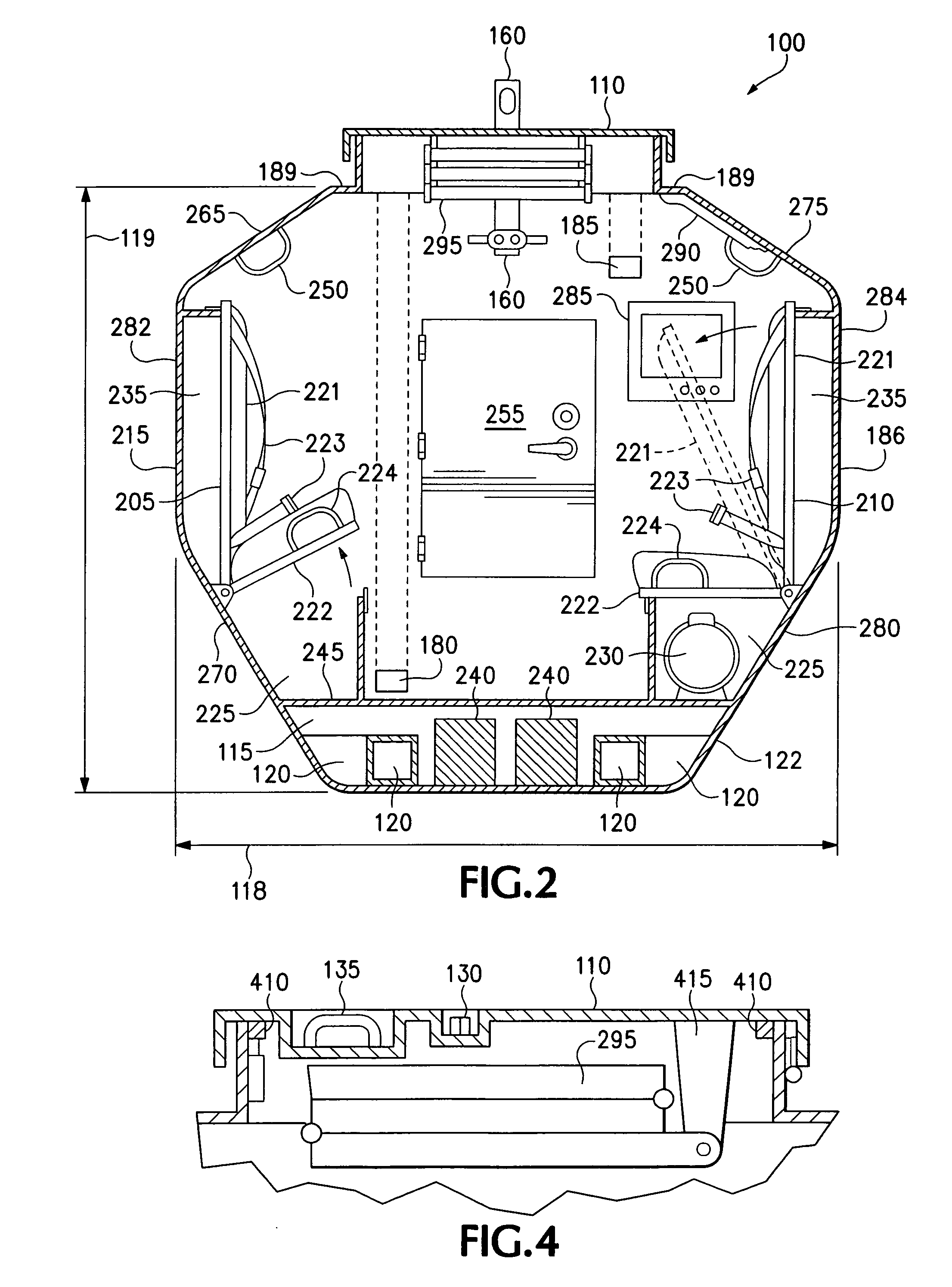Portable survival shelter
a survival shelter and portable technology, applied in the field of survival shelters, can solve the problems of large adaptation and redesign of existing shelter designs, 42,000 missing, severe damage, etc., and achieve the effect of facilitating retrieval
- Summary
- Abstract
- Description
- Claims
- Application Information
AI Technical Summary
Benefits of technology
Problems solved by technology
Method used
Image
Examples
Embodiment Construction
[0020] In the following detailed description, numerous specific details are set forth in order to provide a thorough understanding of the present invention. However, those skilled in the art will understand that the present invention may be practiced without these specific details, that the present invention is not limited to the depicted embodiments, and that the present invention may be practiced in a variety of alternative embodiments. In other instances, well known methods, procedures, components, and systems have not been described in detail.
[0021] Turning now to the drawings, FIG. 1 is an isometric view of a survival shelter 100 according to one embodiment of the invention. The survival shelter 100, as shown, includes a body 105 having a generally elongated shape and a protective outer shell structure, a sealable entrance (or hatch) 110 on the top of the body 105, and a base 115 upon which the body 105 is formed. The body 105 defines a sealable survival chamber that is both l...
PUM
 Login to View More
Login to View More Abstract
Description
Claims
Application Information
 Login to View More
Login to View More - R&D
- Intellectual Property
- Life Sciences
- Materials
- Tech Scout
- Unparalleled Data Quality
- Higher Quality Content
- 60% Fewer Hallucinations
Browse by: Latest US Patents, China's latest patents, Technical Efficacy Thesaurus, Application Domain, Technology Topic, Popular Technical Reports.
© 2025 PatSnap. All rights reserved.Legal|Privacy policy|Modern Slavery Act Transparency Statement|Sitemap|About US| Contact US: help@patsnap.com



